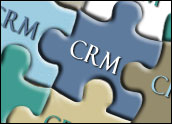
If you live in the English-speaking world, you’ve been exposed to the stereotype of the snotty Parisian. One of the characteristics of this stereotype is that Parisians refuse to speak English. They know how — but they won’t — and they turn up their noses at anyone who won’t speak French.
In my experience, that stereotype is largely wrong — if you make an effort to communicate in any way, most Parisians are perfectly friendly. However, many businesses unwittingly act out the scenario of the snotty Parisian: They speak their own language, and customers who don’t understand it find that these businesses simply make no effort to communicate on their terms.
Businesses always have had jargon, but the era of technology — and, I suspect, formalized advanced business education — has resulted in an increasing language gap between buyers and sellers.
This is a real hazard.
The Jargon Trap
I recall a CEO at a major trade show speaking about how members of his sales team were talking to potential customers whose problems were a precise match for the solution his company was selling, but whose language was that of the potential customers’ specific industry.
The sales team had a hard time adjusting to use the language of the customer and fell back on the jargon they used in-house. As a result, those potential customers became confused. They walked away from a business whose solution was tailor-made to solve their problems.
This is not only an impairment to selling, but also a customer relationship killer. Suppose that somehow you were able to make the initial sale. If you couldn’t talk about problems and solutions from your customers’ points of view, how could they be sure you understood what they were talking about? Beyond that, what does it say about your grasp of their vertical market — and your intentions to act as a trusted partner going forward?
This week, I saw an example of just such a linguistic mismatch in the news. YouTube plans to remove videos from musical artists on independent labels until those labels agree to new terms.
This is in advance of a new music subscription service from YouTube — which they described as something they were doing “to bring our music partners new revenue streams.”
That’s not going to win over any holdouts among independent musicians — in part, because no musician has ever described income sources as “revenue streams.”
So, how do you avoid this? A lot of people think the answer is to talk to your customers. They’re wrong. The secret is to listen to your customers.
Be Prepared
What that means is actively listening to the way they talk about their business and the terms they use.
It’s not a bad idea at any point in the relationship, but it’s especially important early on to pause in a conversation with a customer and ask for clarification about terms that you don’t know. After all, you’d hope they’d do the same when you used a term that was foreign to them.
Even a simple conversation about the different terms you each use to describe similar things is useful. Then, take what you’ve learned and build it into your corporate knowledge. Inserting notes about the customer’s language into the customer record in CRM isn’t a bad idea, for instance.
Then, refresh your knowledge. When you visit a foreign country, you probably look up the important words and phrases of that country’s language to prepare. Why aren’t you doing that before you visit with customers?
The language barrier is a problem that many businesses don’t even realize exists. However, as the power in buyer-seller relationships shifts further toward the buyer, you need to speak to your customers in a way that reflects your commitment to their success if you plan to win and keep their business. That extends all the way down to the language you use to communicate with them.























































I find there’s both sides here. Some companies completely disregard the language of customers while others are oblivious to it.
We’ve found that one of the best ways to get on the same page is to find a partner within the industry who can help show you the ropes. This not only helps with language and terminology, but also with process and expectations. You need to be able to know what your average customer will be wanting/needing in order to satisfy their needs before they come to you.
It’s not a craps shoot.
Brad Hodson
JobNimbus